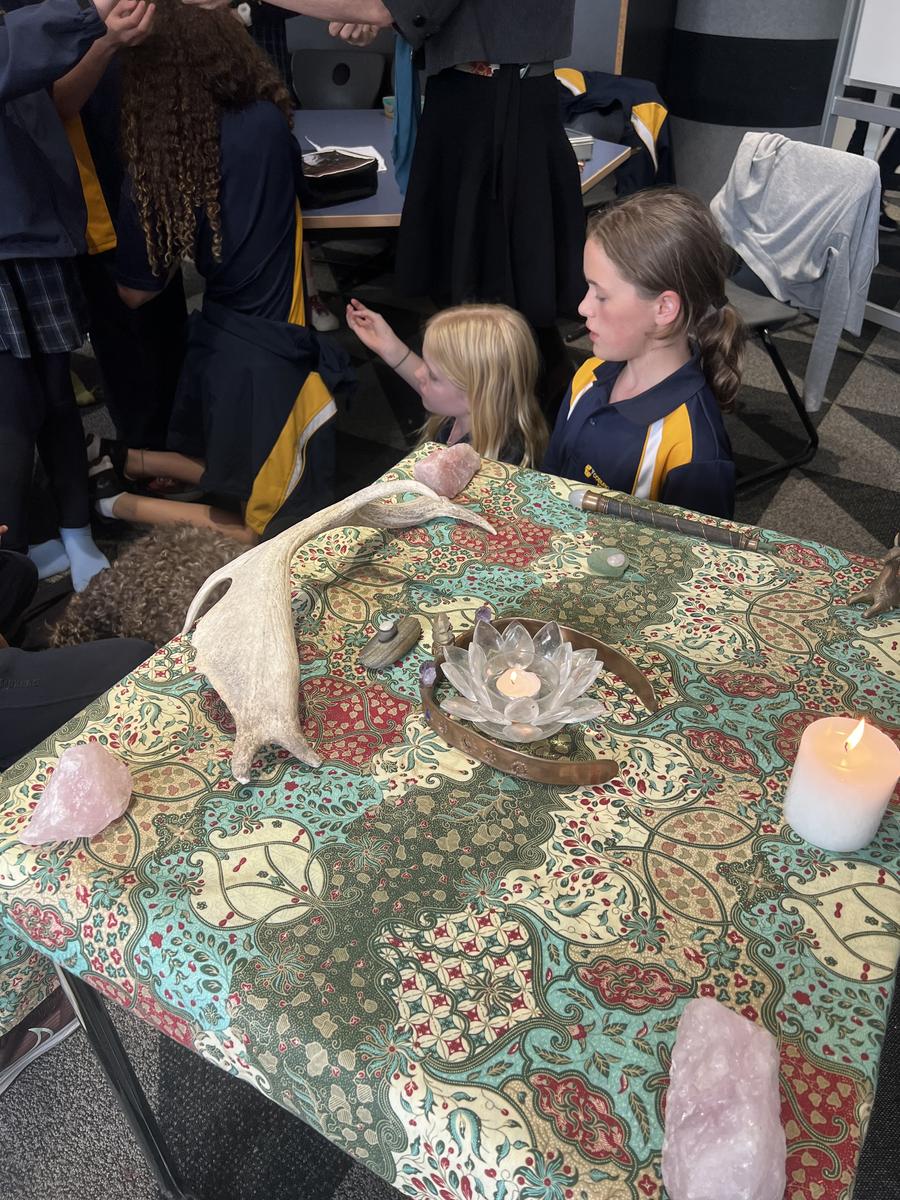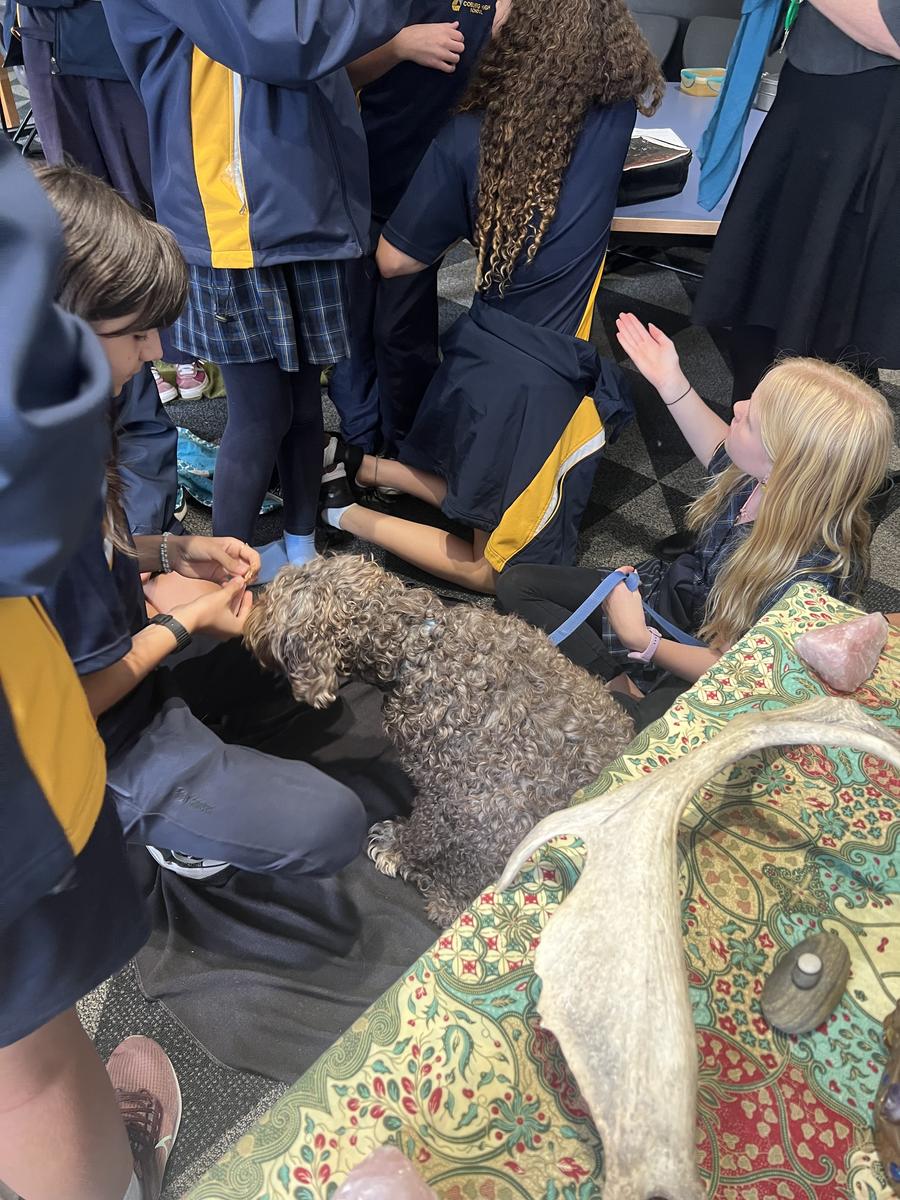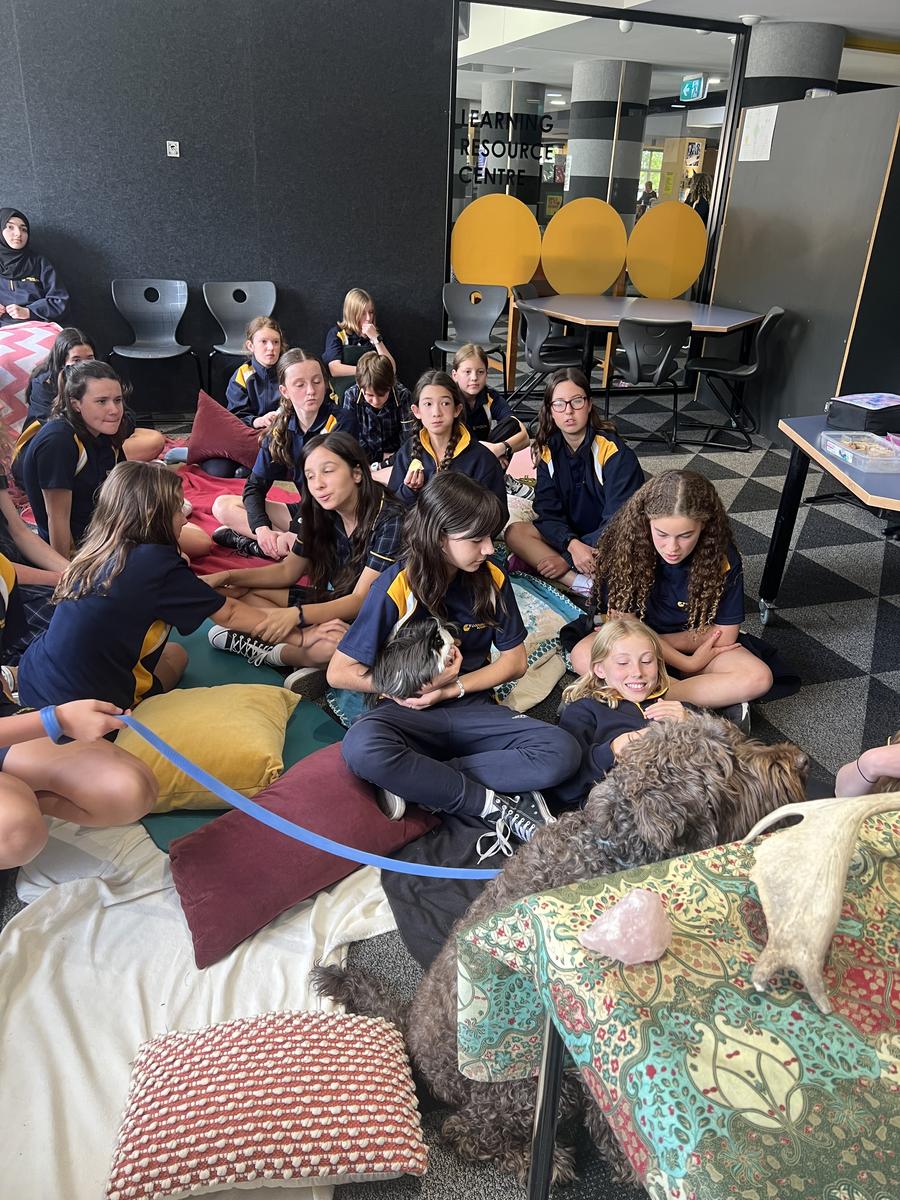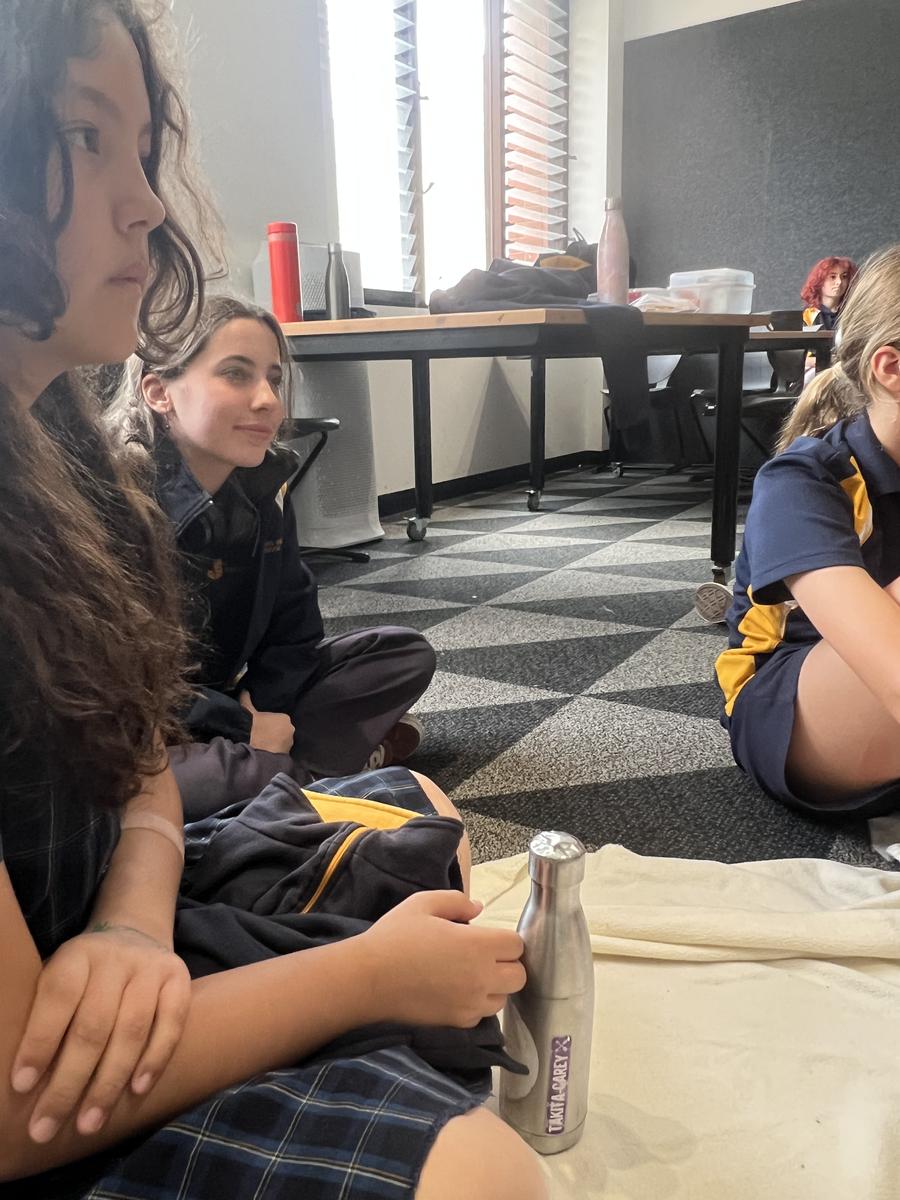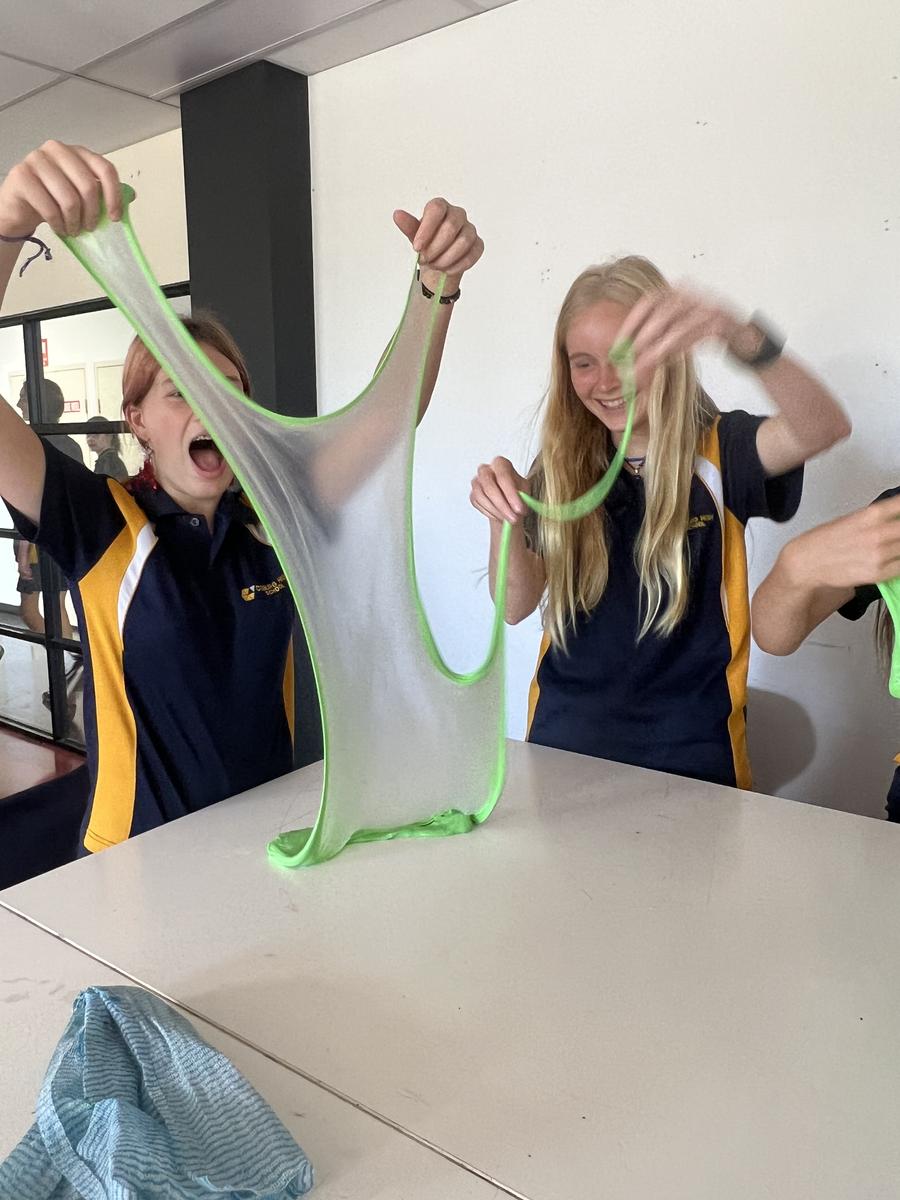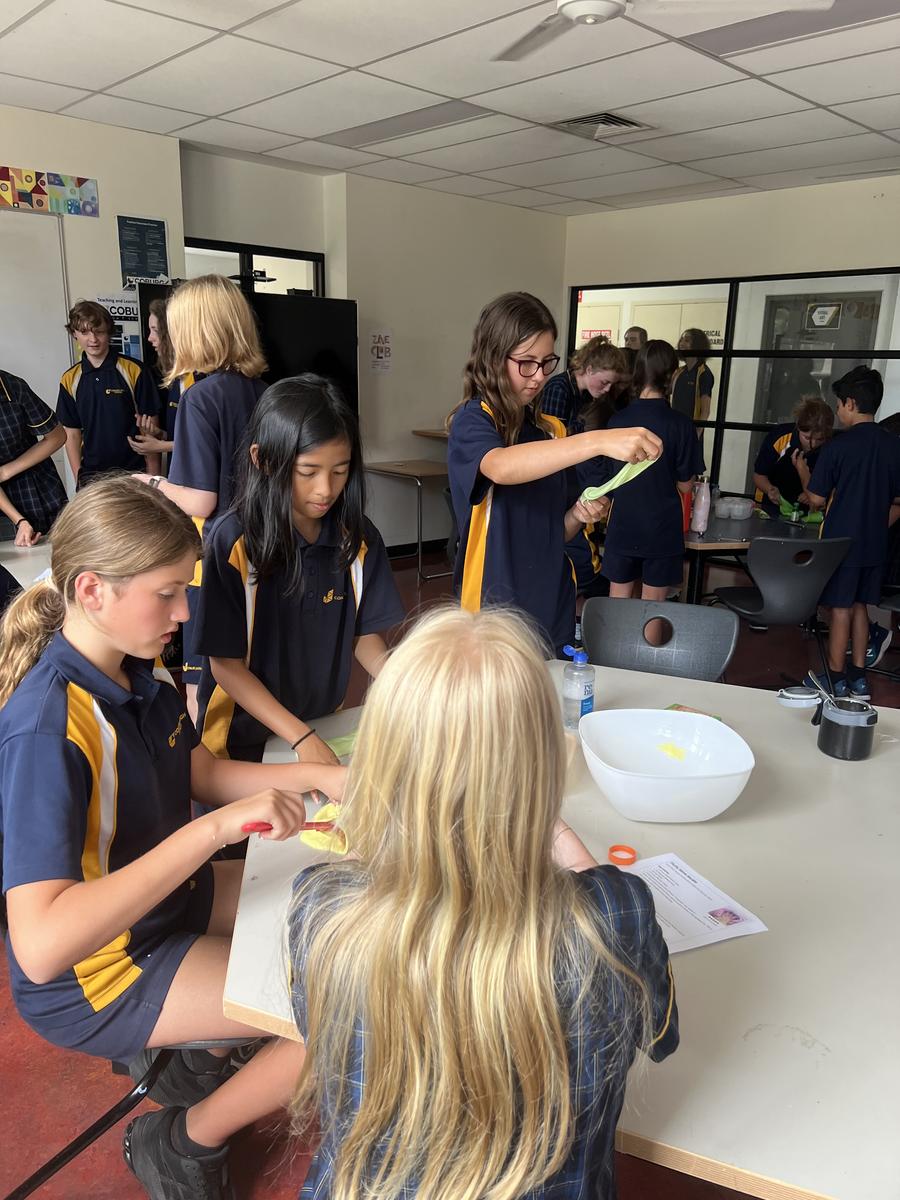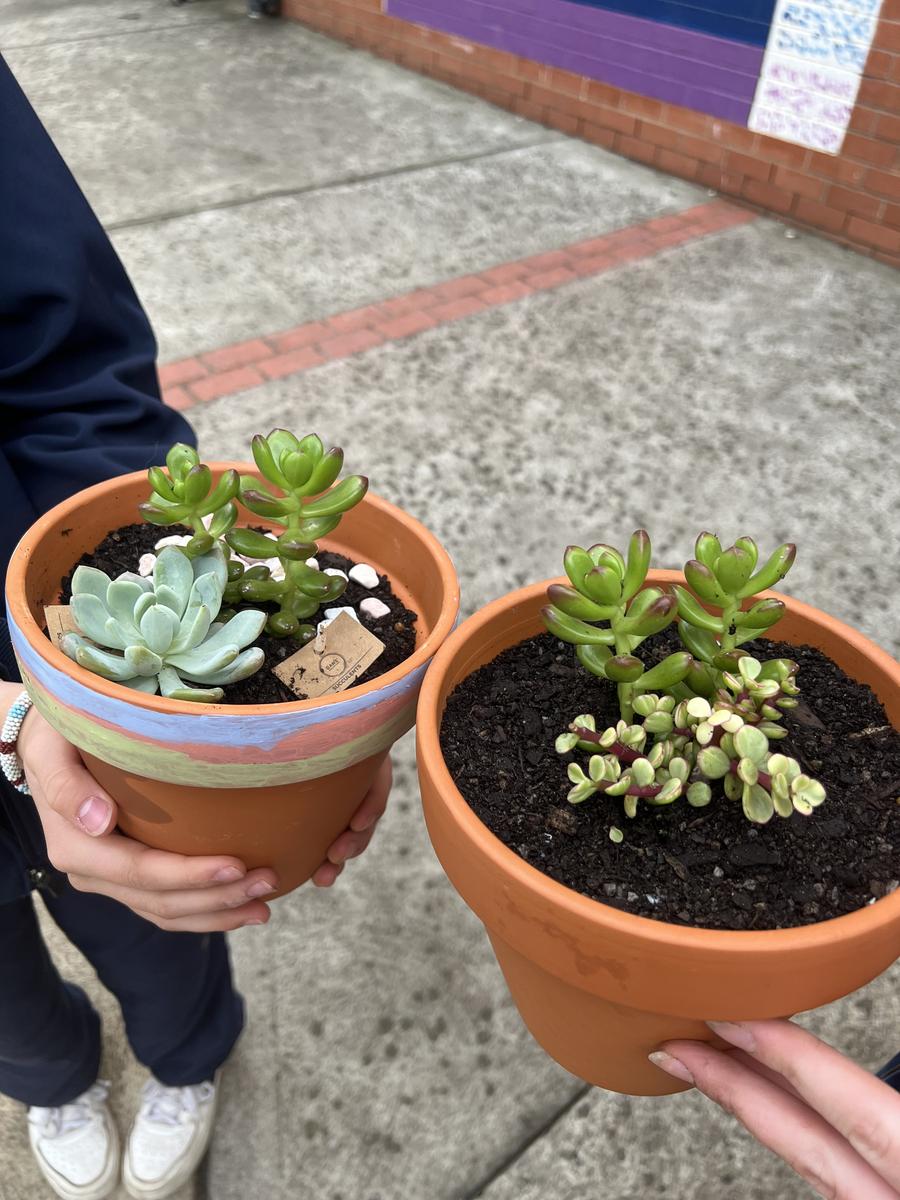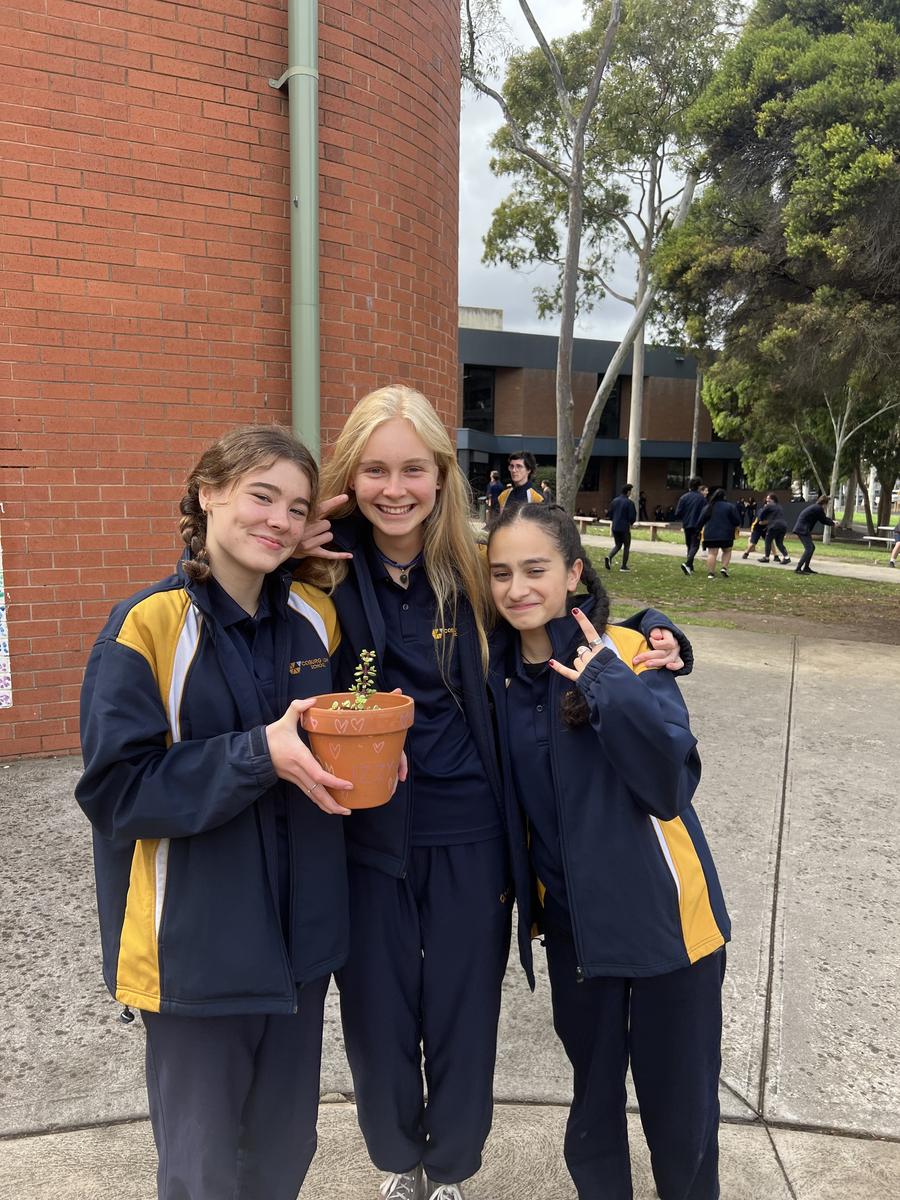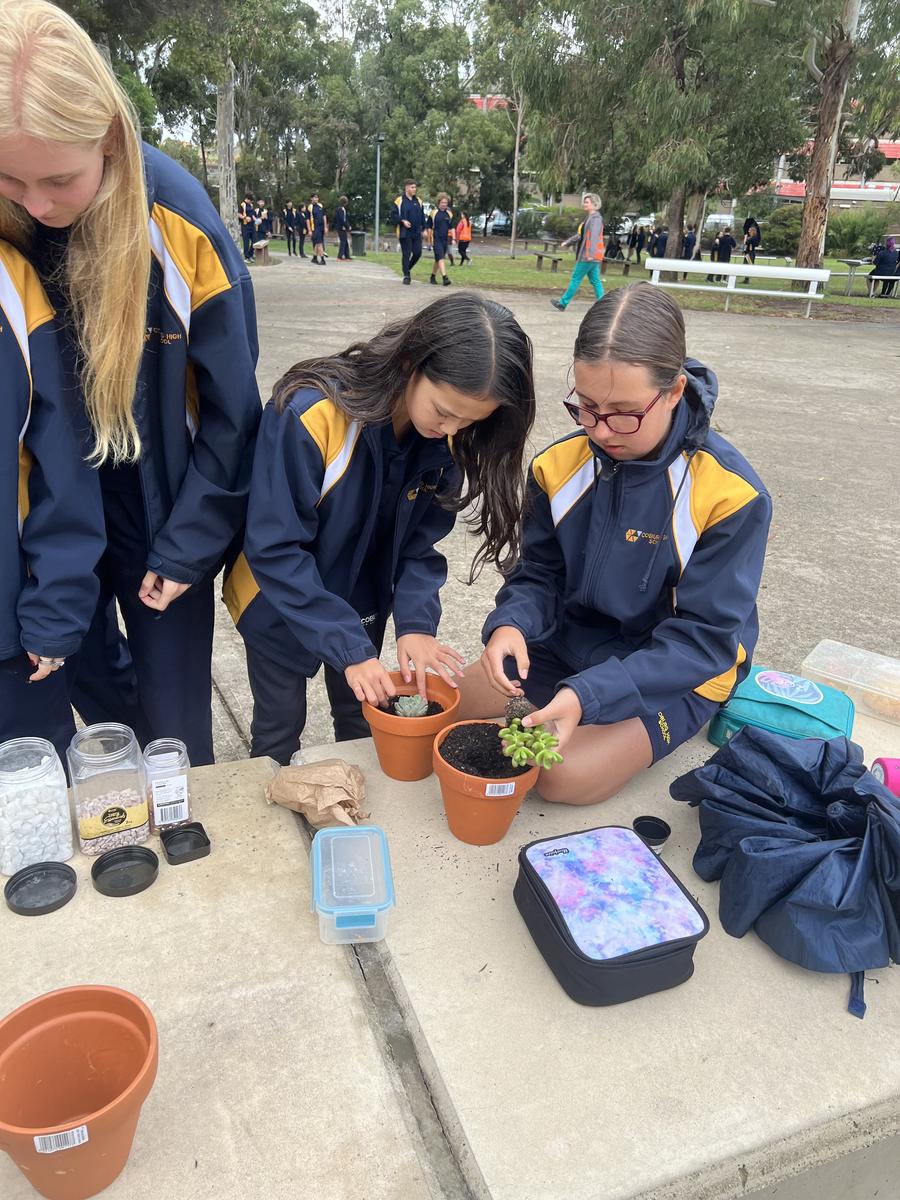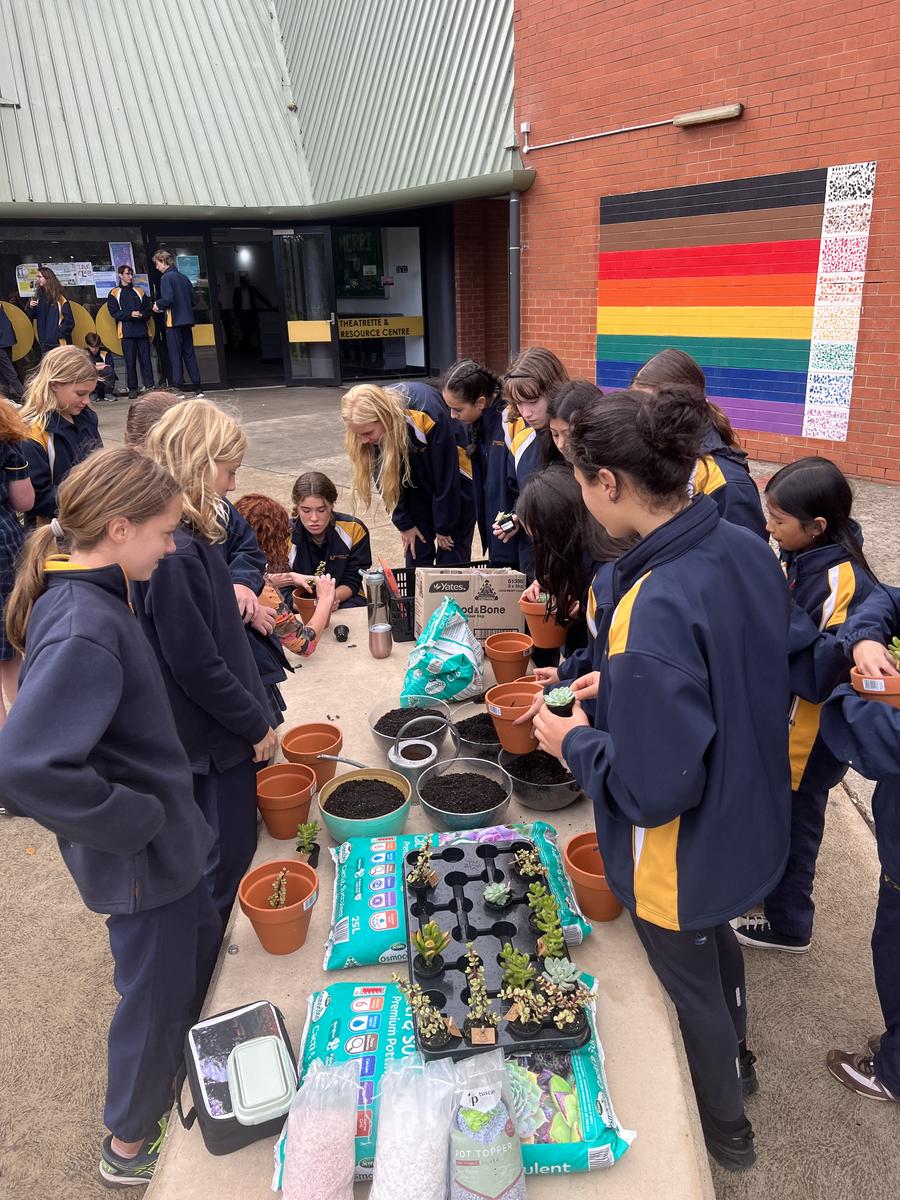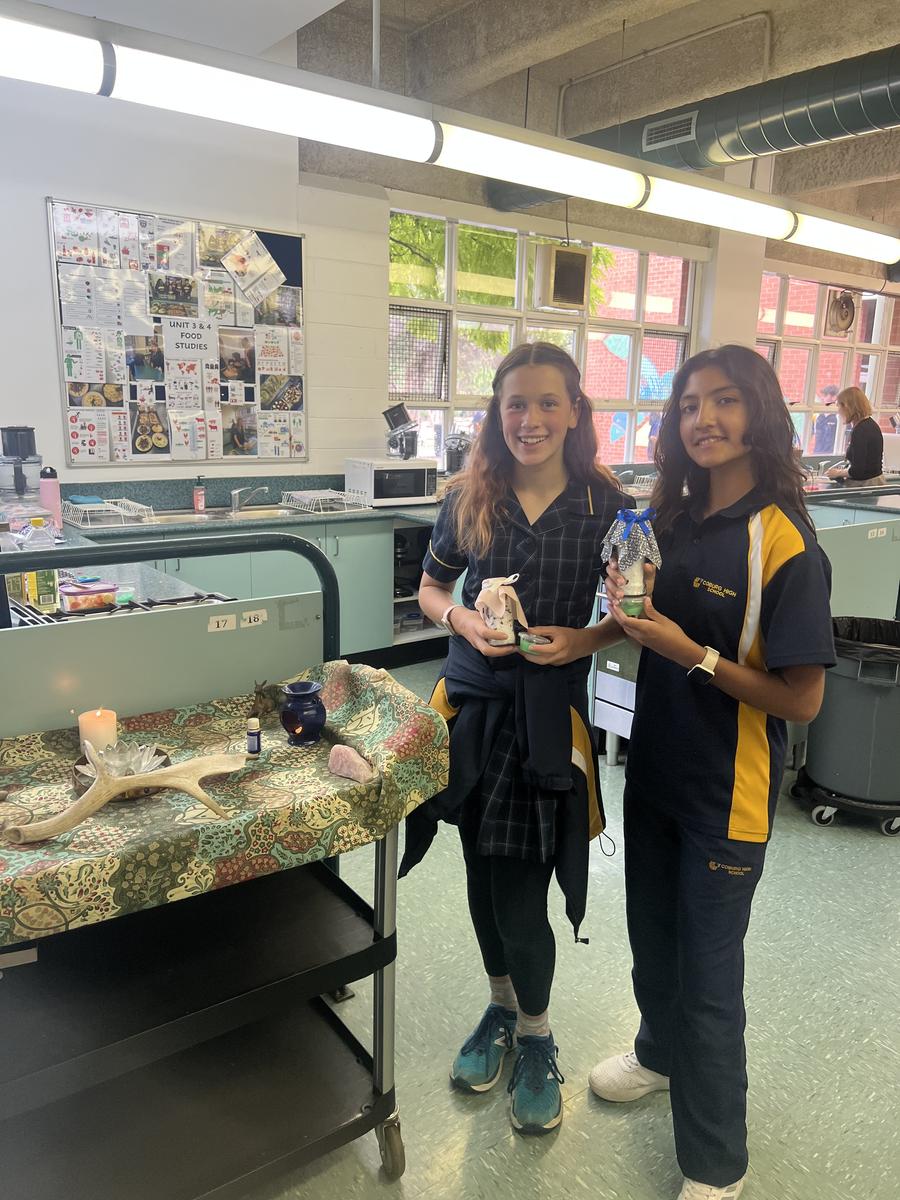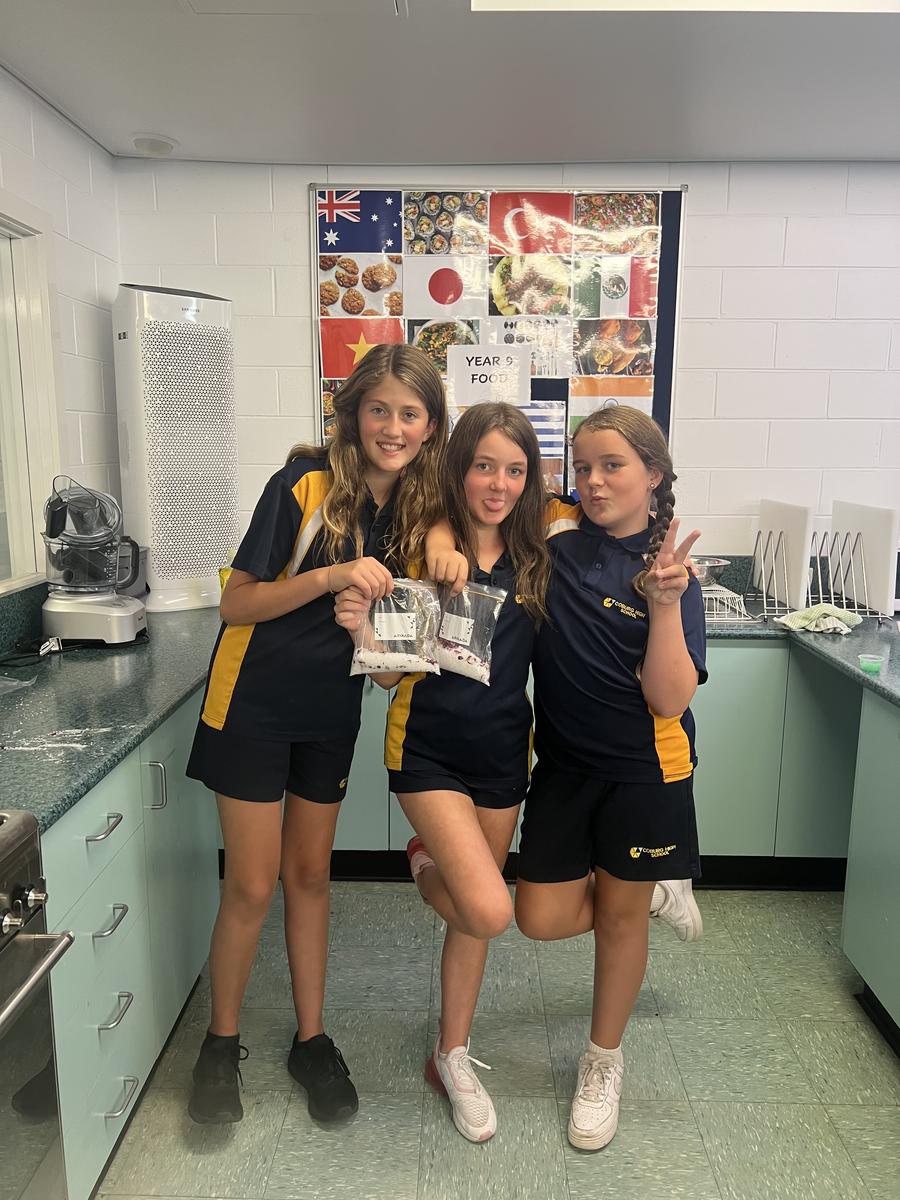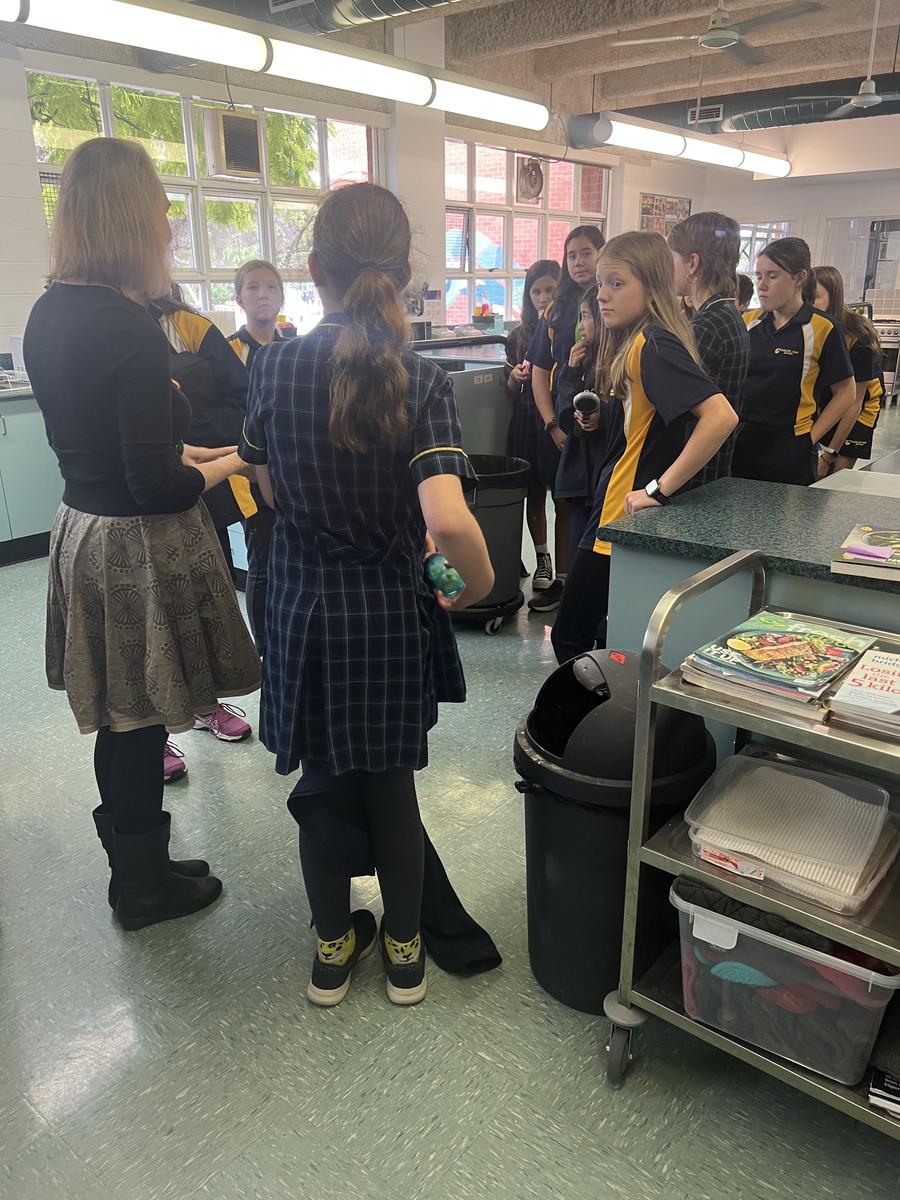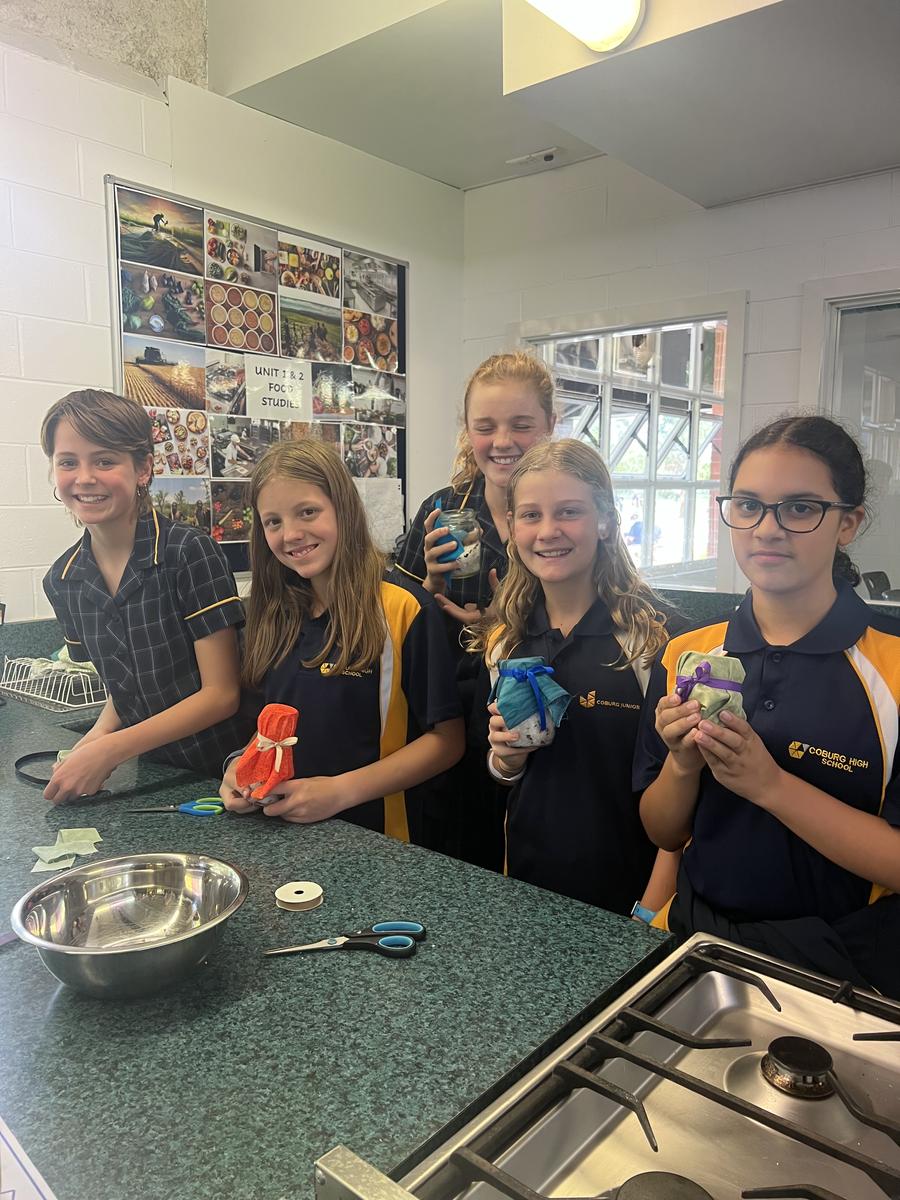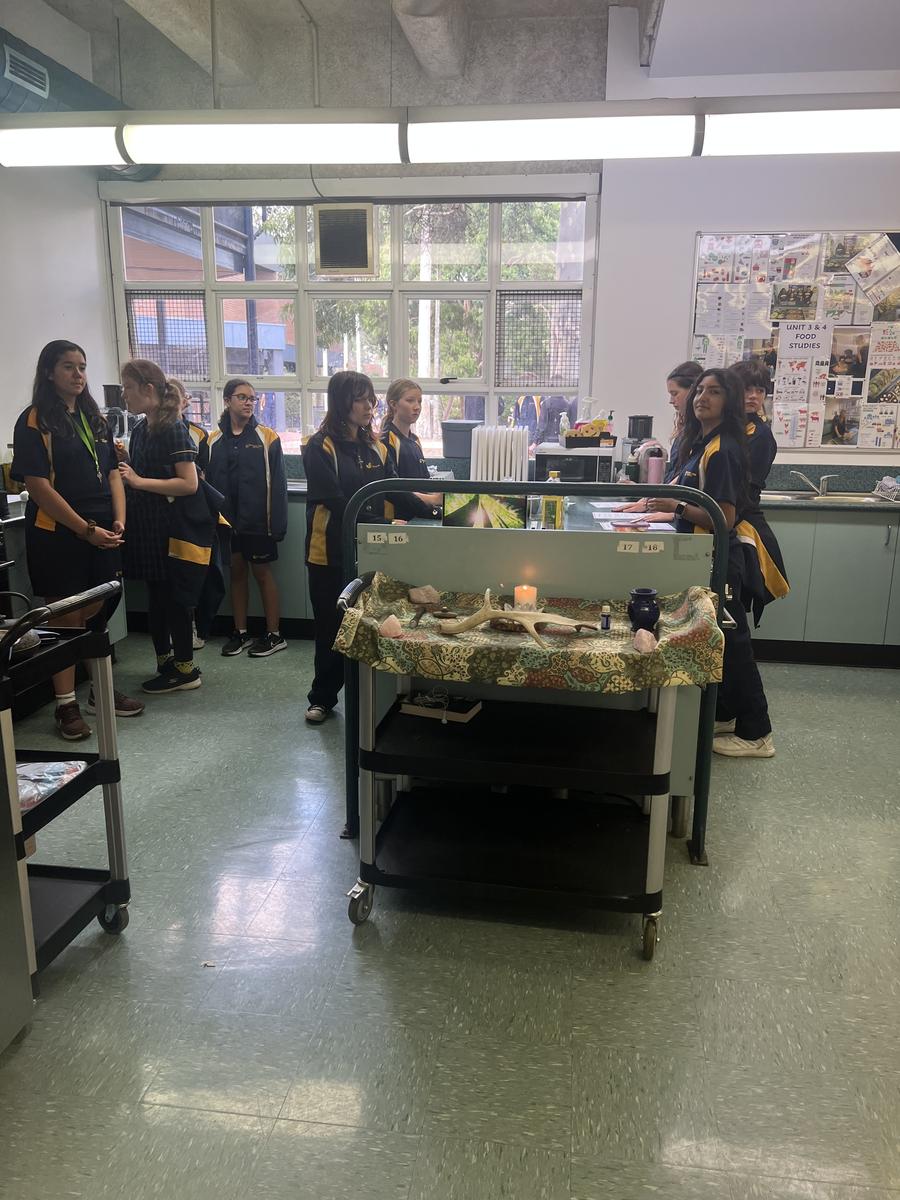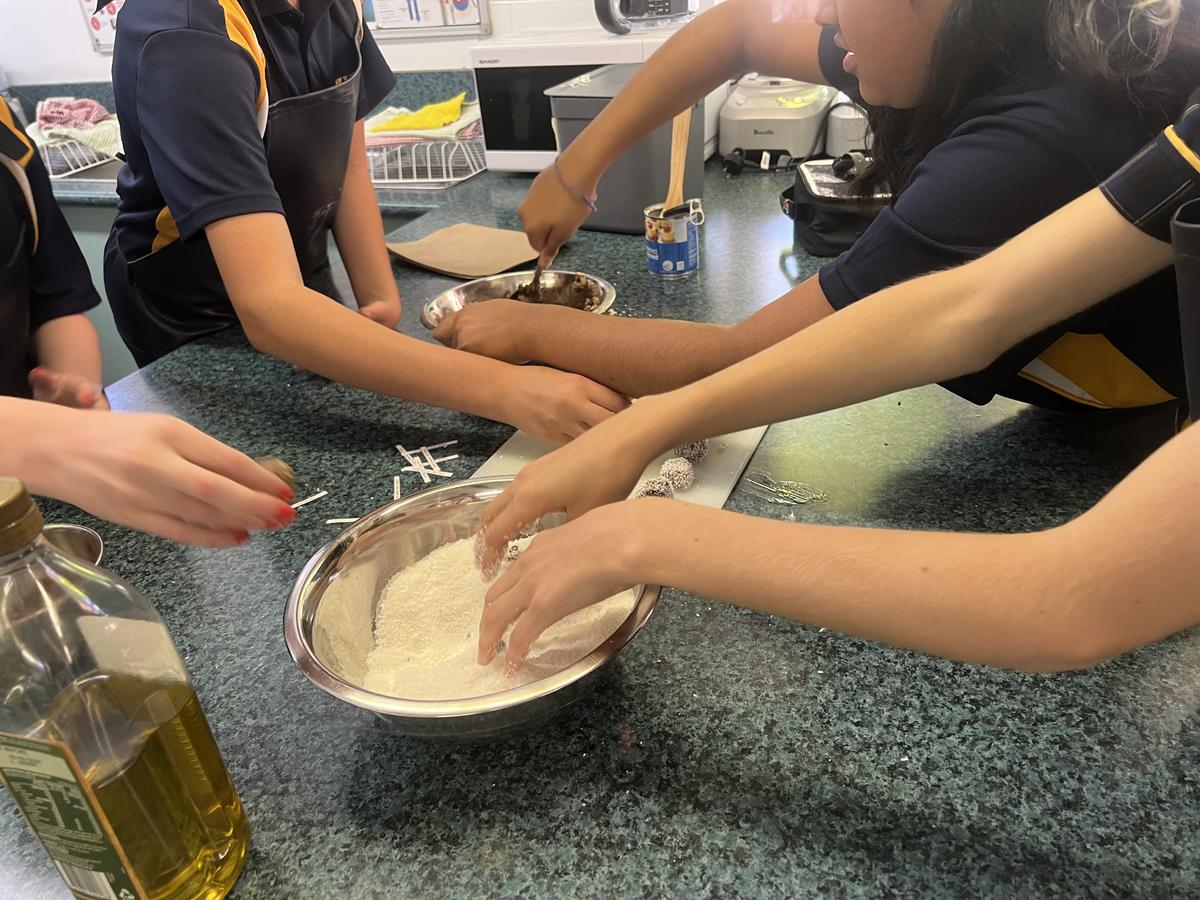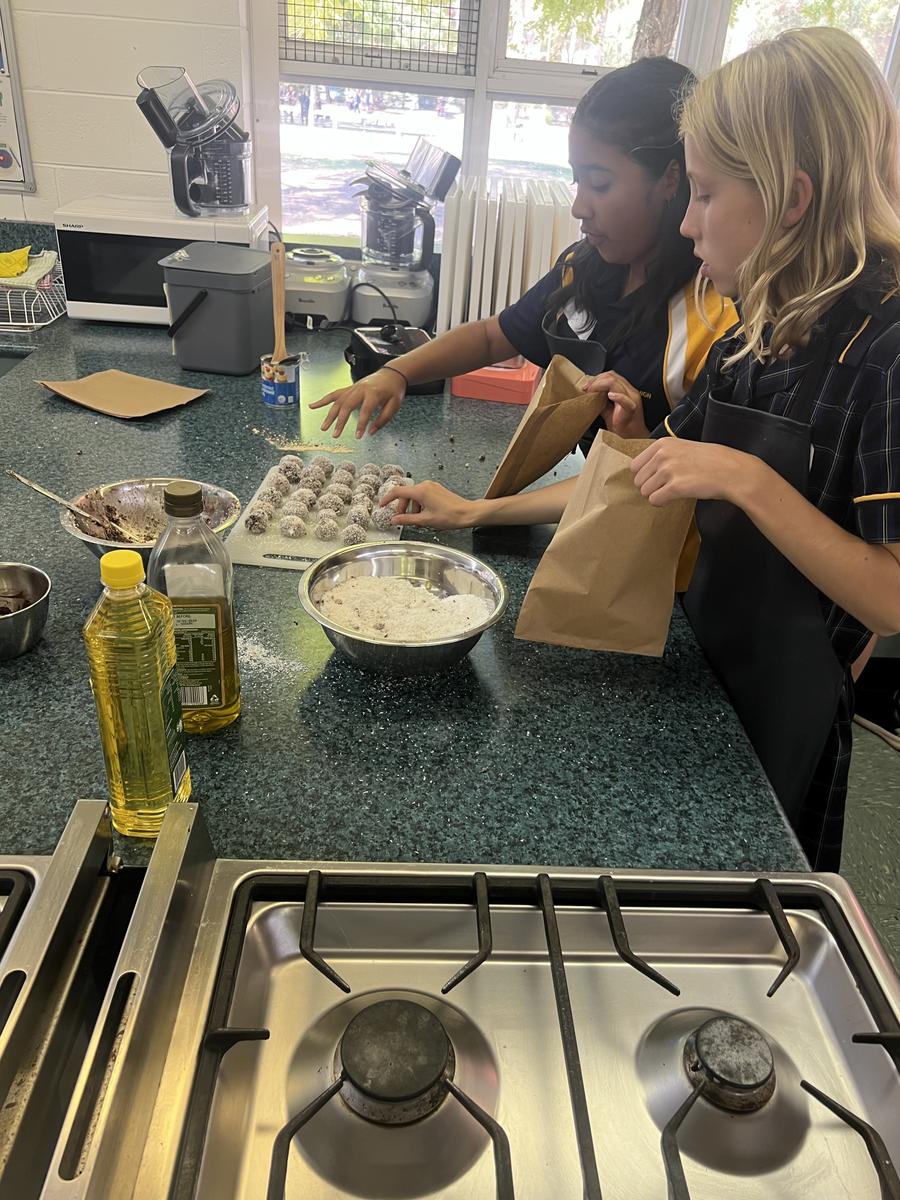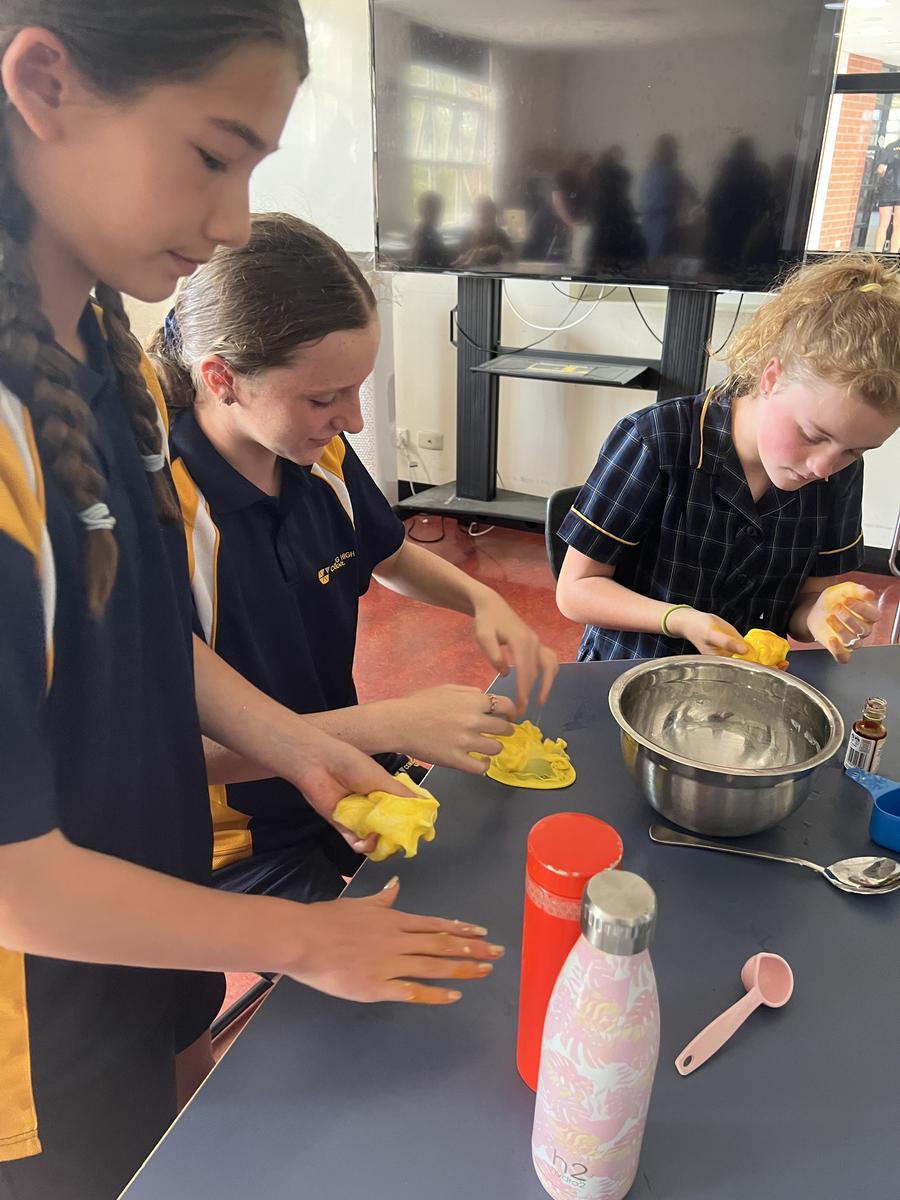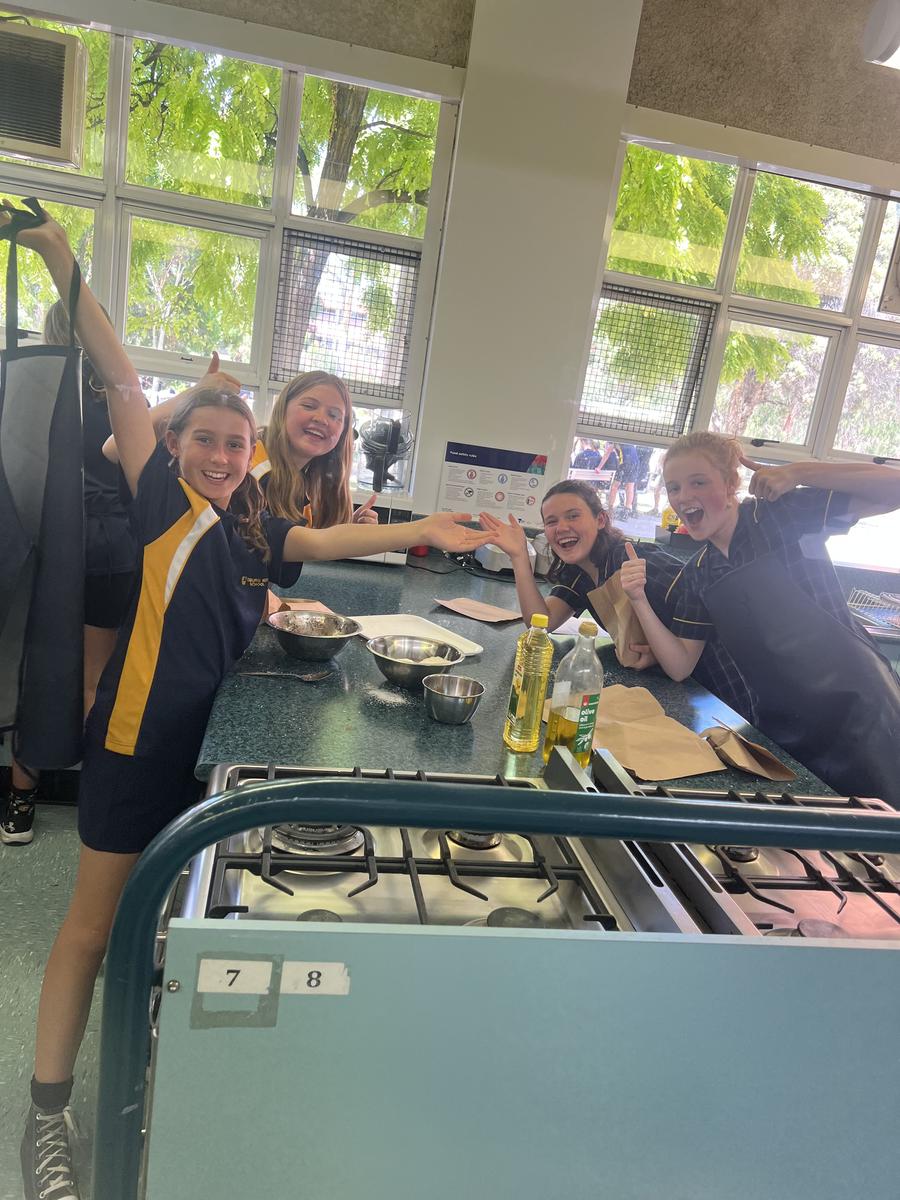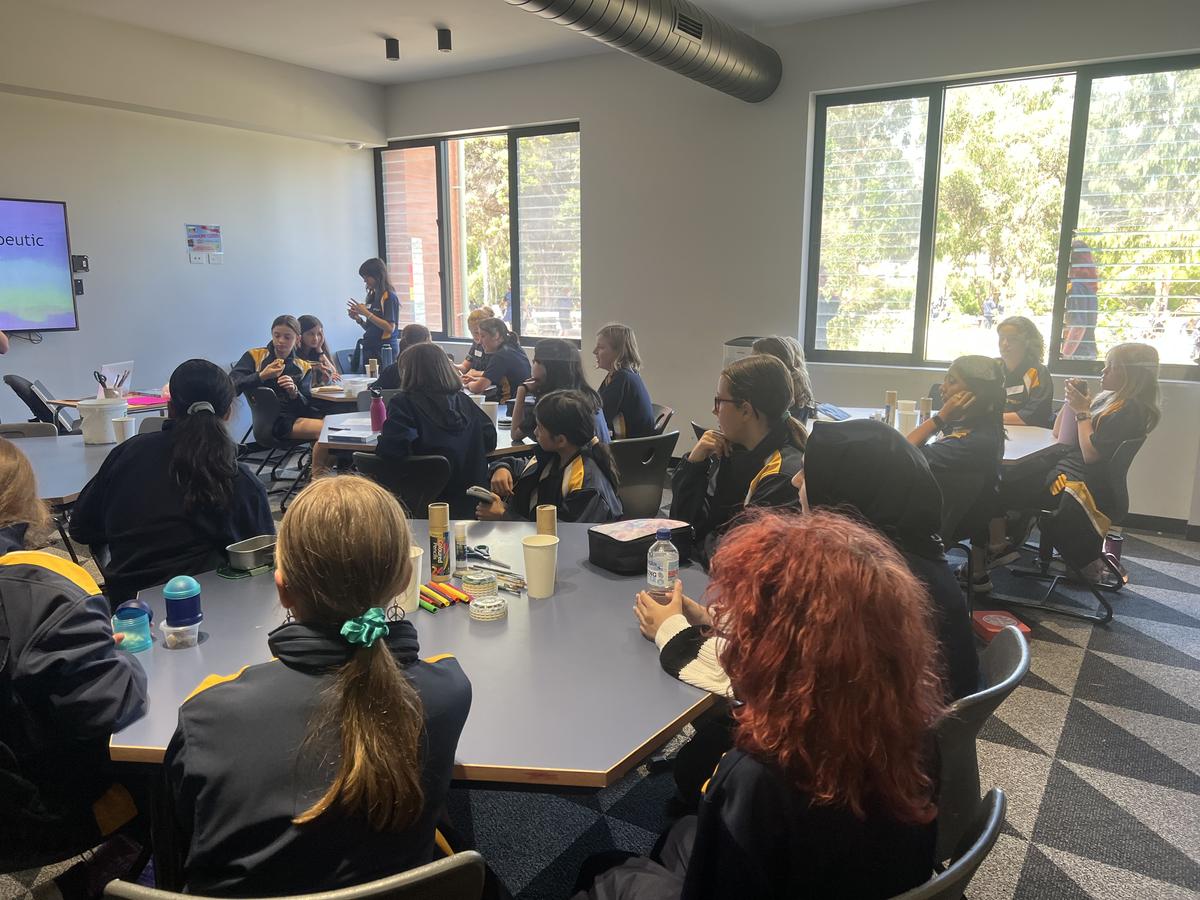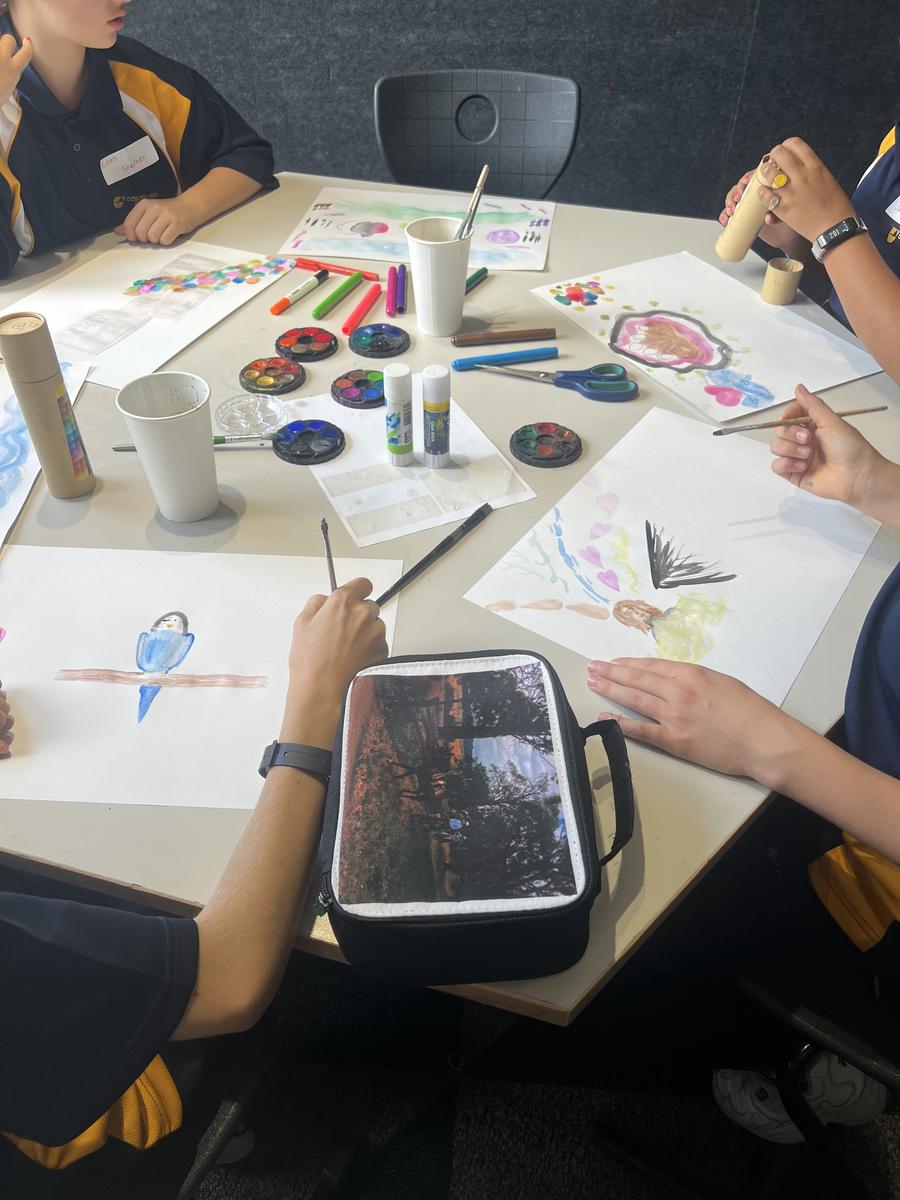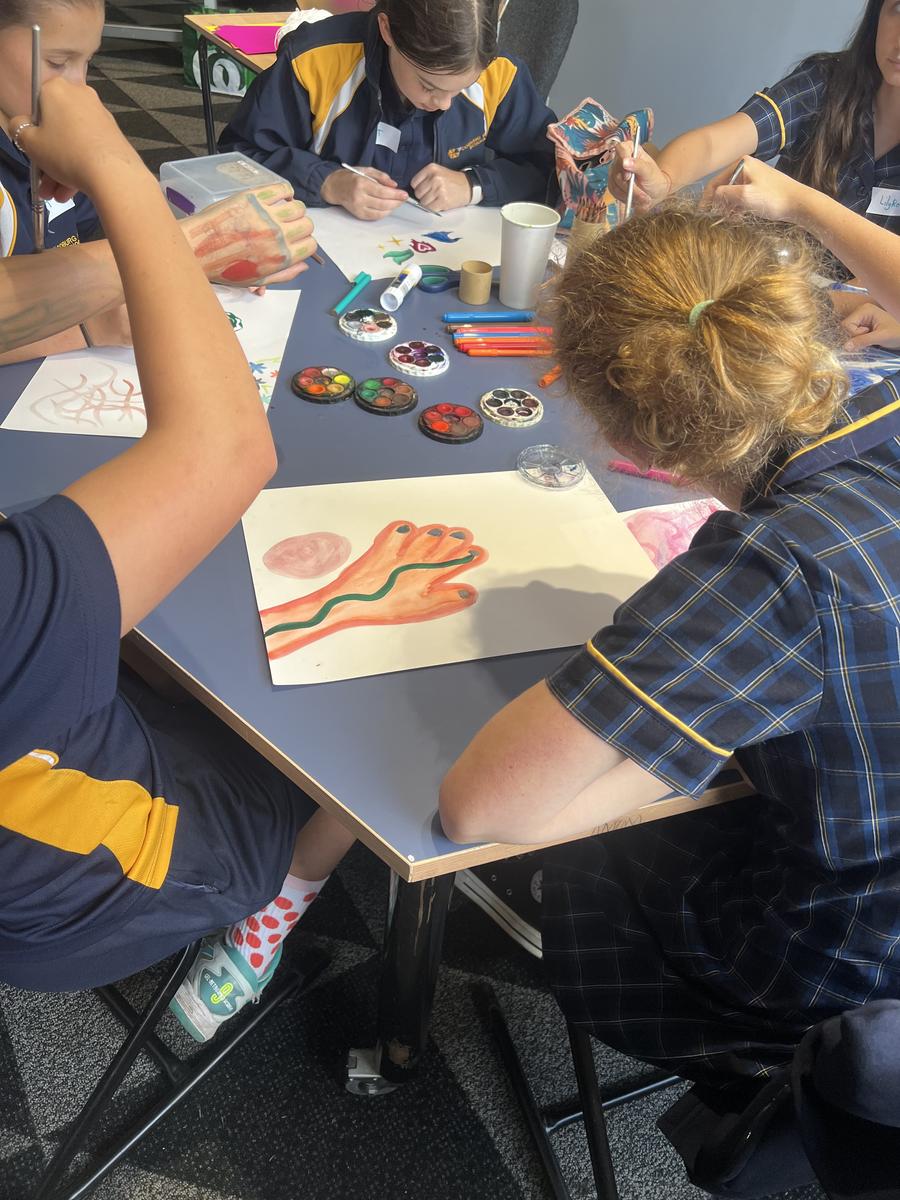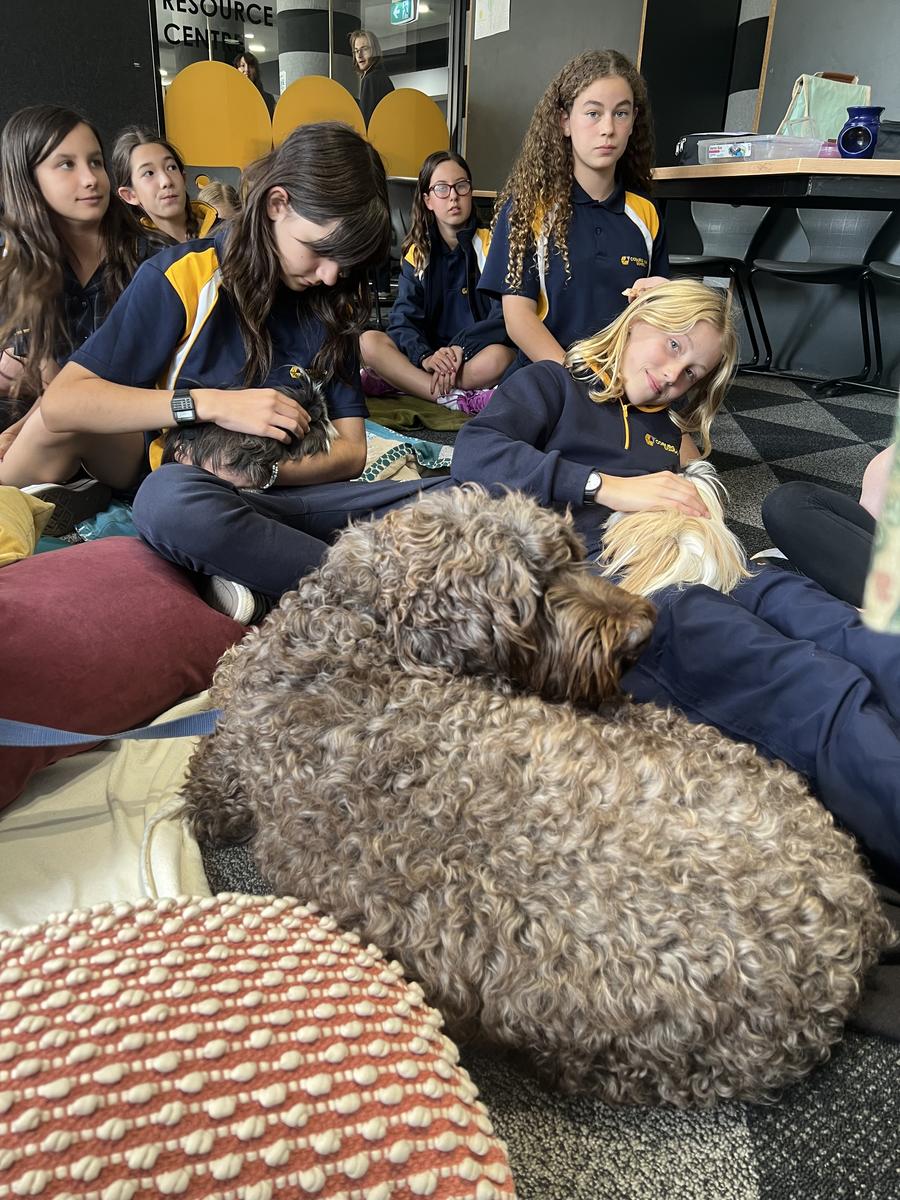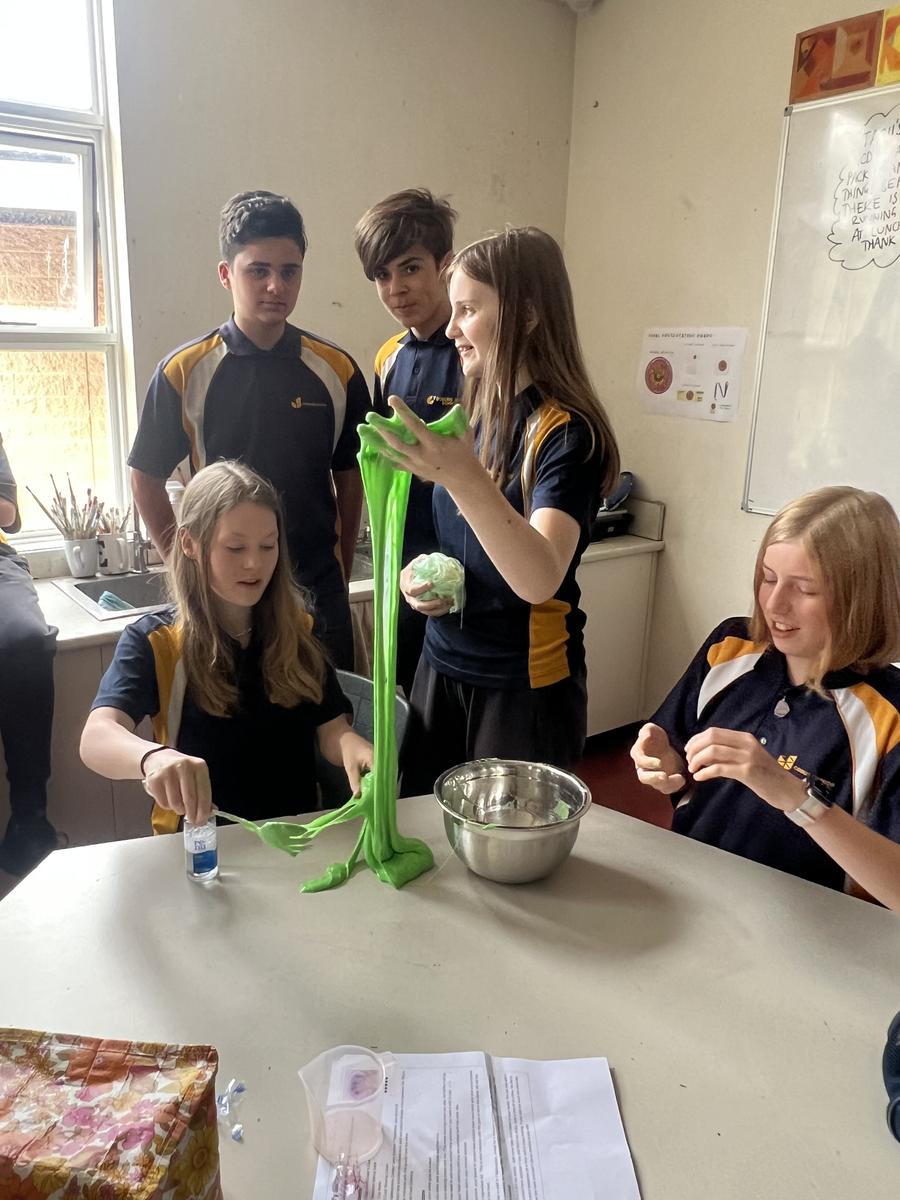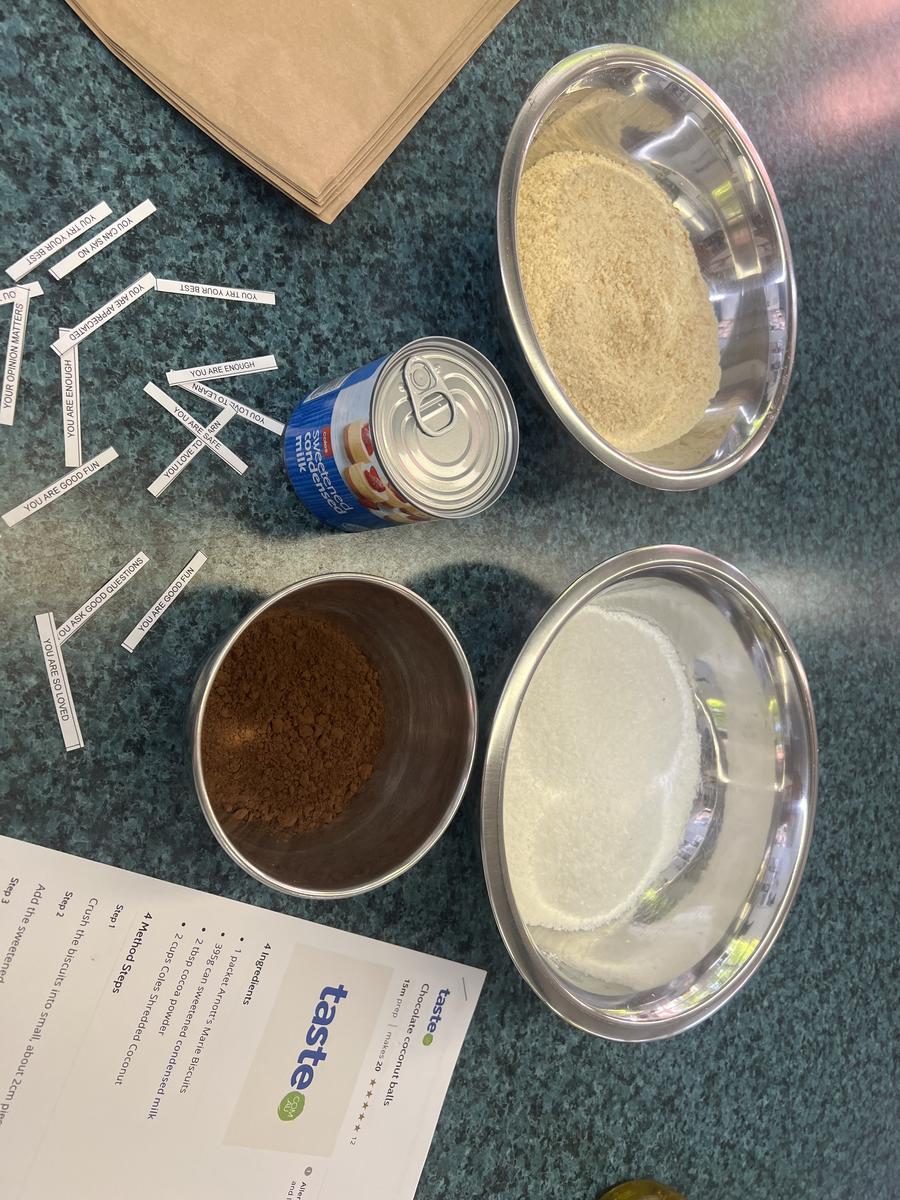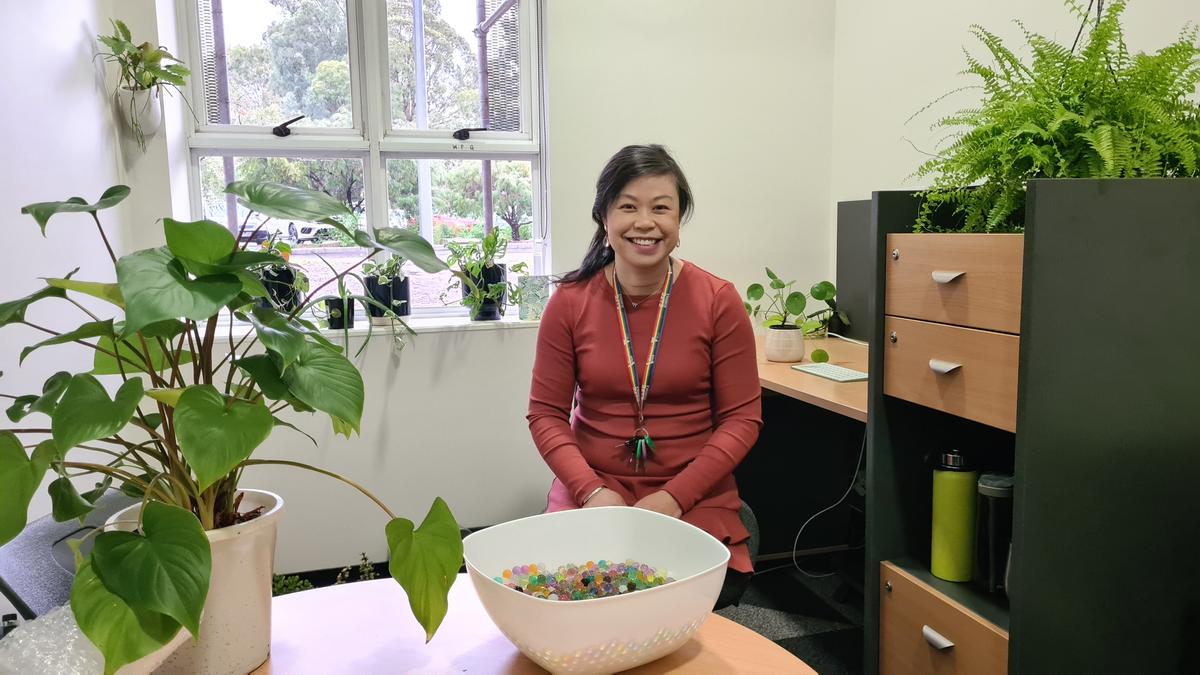Health & Wellbeing
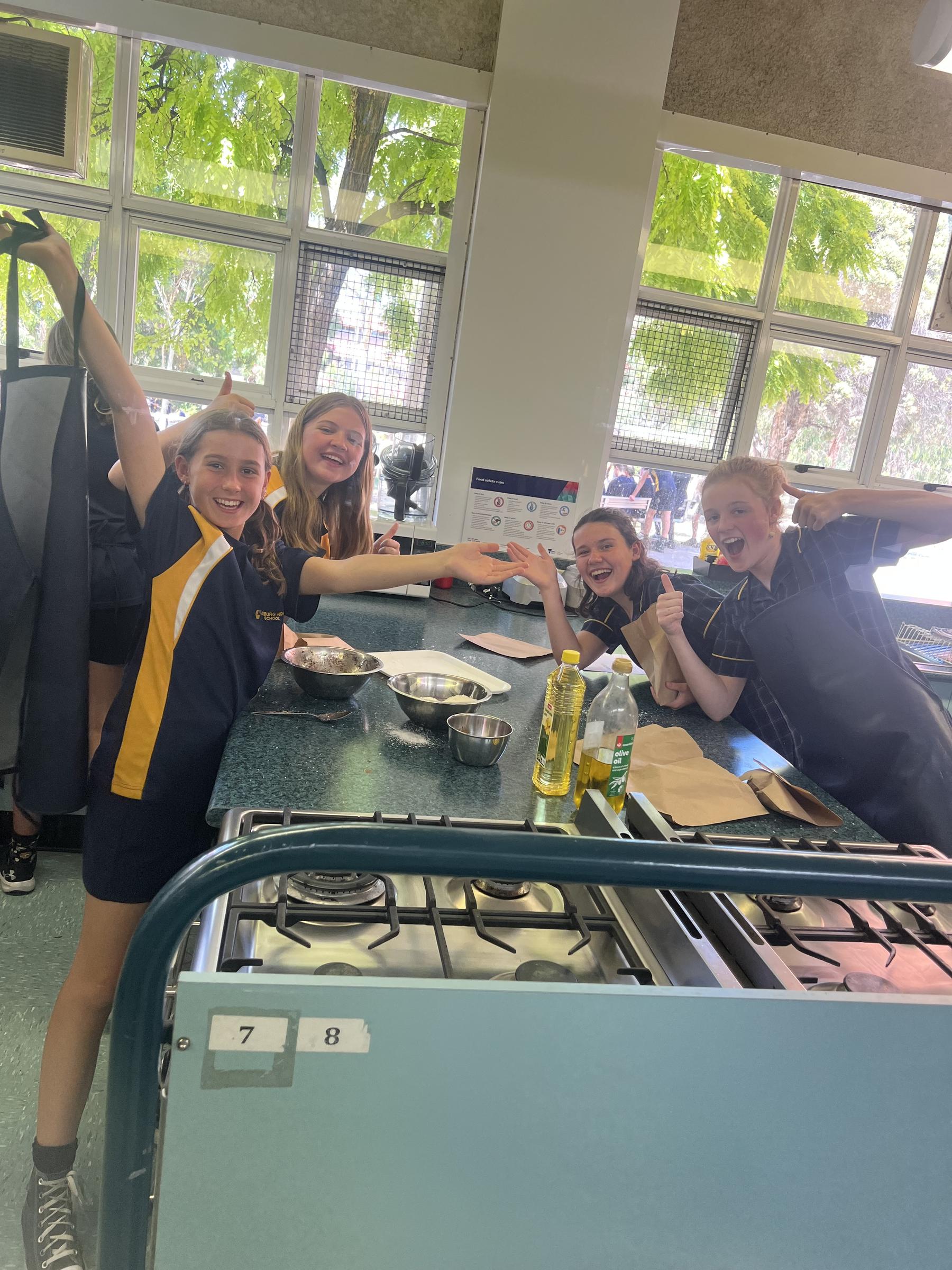
Permission to Pause
This year's Permission to Pause program was bigger and better than ever spanning 7 weeks of interactive activities aimed at fostering resilience, friendship and emotional literacy in students' mental health and wellbeing.
Inger and Pek Lin have had the most remarkable experience of getting to know students from Years 7- 9 embarking on a journey of discovering a myriad of coping strategies.
We have played with pets as part of animal-assisted therapy, created organic skincare potions to help adolescents take care of their skin and got our fingers sticky with making slime. Each activity was a sell out with slime-making attracting over 40 participants who wanted to get involved in the sensory action!
A big shout out to students who were involved and who demonstrated curiosity and willingness to give activities a go!
In term 3, Nic and Edwina will co-facilitate the Permission to Pause program targeting Year 10- 12 students with an emphasis on study support and tips. Stay tuned for more information.
Student Reports
When you start high school you imagine it to be glamorous and magical with lockers and hanging out with friends. Little do you know that you have to walk to every class holding all your heavy books, be around older and mature kids and having to complete KLT’s and homework. When my first KLT came around I was so stressed and had no idea what to do and how to feel calm. Around that time I saw a notification on my phone alerting me about a compass post, this was Permission to Pause. The first Permission to Pause that I participated in was Chocolate coconut balls with Affirmations. I was weary at the thought of making food with other kids from school, although it was such a fun and joyful experience. After that I participated in most of the other experiences Art therapy, Pet therapy, DIY Slime and Mini succulent world. When I started Permission to Pause I thought that it was just a fun thing to do when you were bored, now it's a place where I can relax and calm down from all the stress of homework and KLT’s while talking to the people I trust.
Overall Permission to Pause is a fun, creative, safe, inclusive, welcoming and loving space. This is one of my favourite places to calm down and take a step back and accomplish an easy and enjoyable activity. I hope that everyone will have the experience of Permission to Pause and it's a safe and positive environment!
Gigi F
This year I had the privilege to attend the CHS permission to pause program. The permission to pause is a program that gives you an opportunity to make new friendships and have fun with friends. Permission to pause is an opportunity to focus on your wellbeing and take time for yourself. some of the activities that we did were slime making, chocolate coconut balls with affirmations,art therapy with the amazing Kate lennon,progressive muscle relaxation and pet therapy,
DIY succulent mini world, yoga and my favourite activity DIY skin potions. This was my favourite activity because I really enjoy learning about how to make natural products that help your skin. I enjoyed attending the permission to pause program because I had an opportunity to relax and feel refreshed after each session. I would like to thank all of the amazing teachers who organised the permission to pause program.
Nicola C
Permission to Pause is a club running different lunchtime activities to help students to feel comfortable and relaxed. I joined the club because it looked interesting and had lots of fun activities like pet therapy, art therapy and cooking. In the first session we made chocolate rum balls and we added in positive affirmations so there was a lovely surprise for people who ate them. In the art therapy session an art teacher came in and gave us big pieces of paper, paint, pencils and crayons. She asked us questions and we drew or painted our responses. One question was ‘When have you felt happy this week?’. For pet therapy we laid out cushions and blankets on the floor and patted a dog called Willow and two guinea pigs. It was really fun patting the animals and it was relaxing. The other students in the club are really nice and I would recommend other students come along.
Esther R
The Permission to Pause Program is a lunch time activity where students come together to participate in wellbeing activities for their mental health. This is the second year this program has run at Coburg High school and I believe it is a fun way to learn about coping with your mental health by sharing strategies to overcome challenges, and learning different ways to cope through mindfulness. I loved being apart of this program and having fun with my friends who came along with me. The teachers were very supportive and friendly, and i always felt welcome and invited to come along. I thank the team effort that went into creating this program and hope to see more like this in the future.
Seren
Pek-Lin Cerase
Student Wellbeing
Sleep Health
While we know sleep is essential for good health, research shows that many children and young people are not getting enough sleep on school nights. This can affect thinking, concentration, memory, reaction times and mood.
Research shows about 12% of primary school-aged children, a quarter of 12- to 15-year-olds and half of 16- to 17-year-olds don’t get enough sleep on school nights. The recommended amount of time to sleep for primary school-aged children is 9 to 11 hours. For teenagers, it’s 8 to 10 hours.
Signs that your child is not getting enough sleep can include:
- low mood and irritability during social interactions
- reluctance or arguing about getting off devices and going to bed
- falling asleep during the day
- difficulties waking up for school and sleeping in late on weekends to catch up
- changes to communicating or interacting at home.
You can help your child to improve their sleep by:
- establishing a regular sleep pattern and consistent bedtime routine
- supporting them to avoid using electronic devices such as smartphones before going to bed and in bed
- encouraging your child to exercise and spend time outside in daylight, steering clear of vigorous activity in the hour before sleep
- encouraging them to wind down and relax before going to bed.
If your child is still having trouble sleeping, has persistent problems with low mood, excessive daytime sleepiness, restlessness in bed, severe snoring or wakening unrefreshed, despite getting adequate length sleep, they should see a doctor.
For more information on sleep health, you can refer to:
- Sleep tips for children and Facts about sleep for parents and school staff, from the Sleep Health Foundation
- Why sleep is so important, from the Kids Helpline
- Sleep explained, from the Better Health Channel.
For further enquiries, contact the Health Promotion, Prevention and Advice team by email: health.advice@education.vic.gov.au

